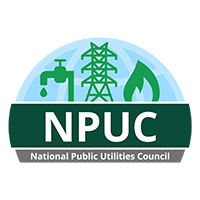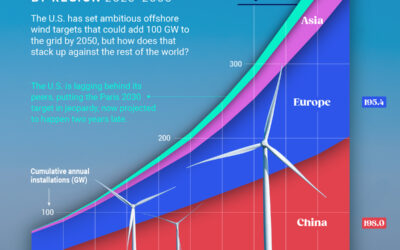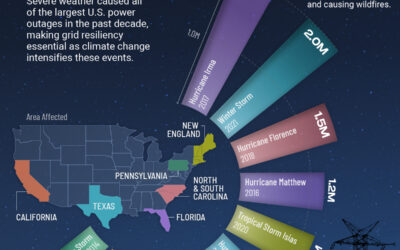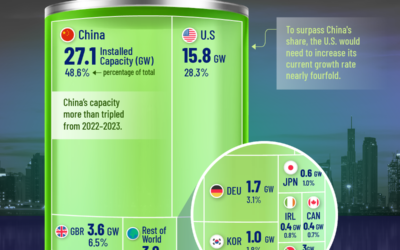The 3 Building Blocks for a Decarbonized Power Sector
As part of the Paris Agreement, the U.S. has set goals to achieve a 50-52% reduction in emissions by 2030 and net-zero emissions by 2050.
To lay the foundation for these targets, the Biden Administration’s goal is to create a 100% clean power sector by 2035.
This infographic from the National Public Utilities Council shows why a clean power sector is essential for net-zero emissions and highlights the three building blocks needed to achieve it. This is part 2 of the Road to Net Zero series of infographics.
The State of U.S. Energy Use
Today, fossil fuels like oil and gas provide most of the energy used in the U.S. for transportation, heating, and industrial purposes.
For example, due to the prevalence of gasoline vehicles, petroleum accounts for 90% of the transportation sector’s energy consumption, with electricity making up less than 1% of the total.
Similarly, around 80% of the industrial sector’s energy needs are met with natural gas and petroleum. Meanwhile, the residential and commercial sectors use large amounts of natural gas for their space heating needs, along with electricity for other appliances.
With fossil fuels widespread in the U.S. energy mix, the fastest path to net-zero emissions is to electrify and decarbonize energy use in all sectors. This involves replacing technologies that use fossil fuels with those powered by electricity and a clean grid.
For instance, electric vehicles could transform the transportation sector’s energy consumption and reduce emissions. Additionally, electric heat pumps could replace oil and gas boilers in residential and commercial buildings.
However, for electrification to be effective in reducing emissions, decarbonizing the power sector and generating clean electricity is essential.
The Path to a Decarbonized Power Sector
Decarbonization calls for a transformation of the power sector, from one where fossil fuels generate 60% of total electricity to one dominated by clean energy and backed by an upgraded grid.
There are three foundational building blocks for the road to 100% clean electricity:
#1: Accelerate Clean Energy Deployment
With renewable energy now cheaper than fossil fuels, expanding solar- and wind-powered generation is key to replacing fossil fuels and reaching zero emissions.
According to Princeton University, for net-zero emissions by 2050, the U.S. needs to add more than 50 gigawatts of solar capacity annually from 2022 to 2035. That is significantly higher than the 13 gigawatts installed in 2021.
#2: Support Clean Energy with Grid Expansion
With the U.S. power grid aging, new high-voltage transmission capacity is essential for transporting electricity from remote solar and wind farms to centers of demand.
From 2013 to 2020, U.S. transmission capacity grew by just 1% annually. To align with the net-zero pathway, the pace of expansion needs to more than double through 2030.
Here’s how transmission expansion could affect U.S. greenhouse gas (GHG) emissions, as modeled by Princeton:

Source: Princeton University – Zero Lab
With a 2.3% annual growth in transmission capacity, U.S. GHG emissions could achieve a 32% reduction from the 5.6 billion tonnes emitted in 2021.
#3: Invest in Nuclear Power and Battery Storage
The intermittent nature and low reliability of wind and solar power generation pose a challenge for the energy transition.
Battery storage systems and nuclear power can solve the intermittency problem by supplying clean electricity when wind and solar generation falls.
For example, storage systems can store excess solar power that is produced during sunny periods of the day, and supply it in the evening when solar generation dips. Meanwhile, nuclear power plants can supply electricity around the clock, acting as a clean baseload power source.
Towards a Carbon-free U.S. Economy
New renewable capacity, transmission expansion, and reliable backup sources are key to unlocking a carbon-free power sector.
Together, these three building blocks form the foundation for economy-wide emissions reduction and net-zero emissions by 2050.





